A hiber-what-do-you-call-em I hear you say. A hibernaculum is basically a safe place for hibernating creatures to see out the winter months. Ideally it’ll protect them from the worst of the weather and predators.
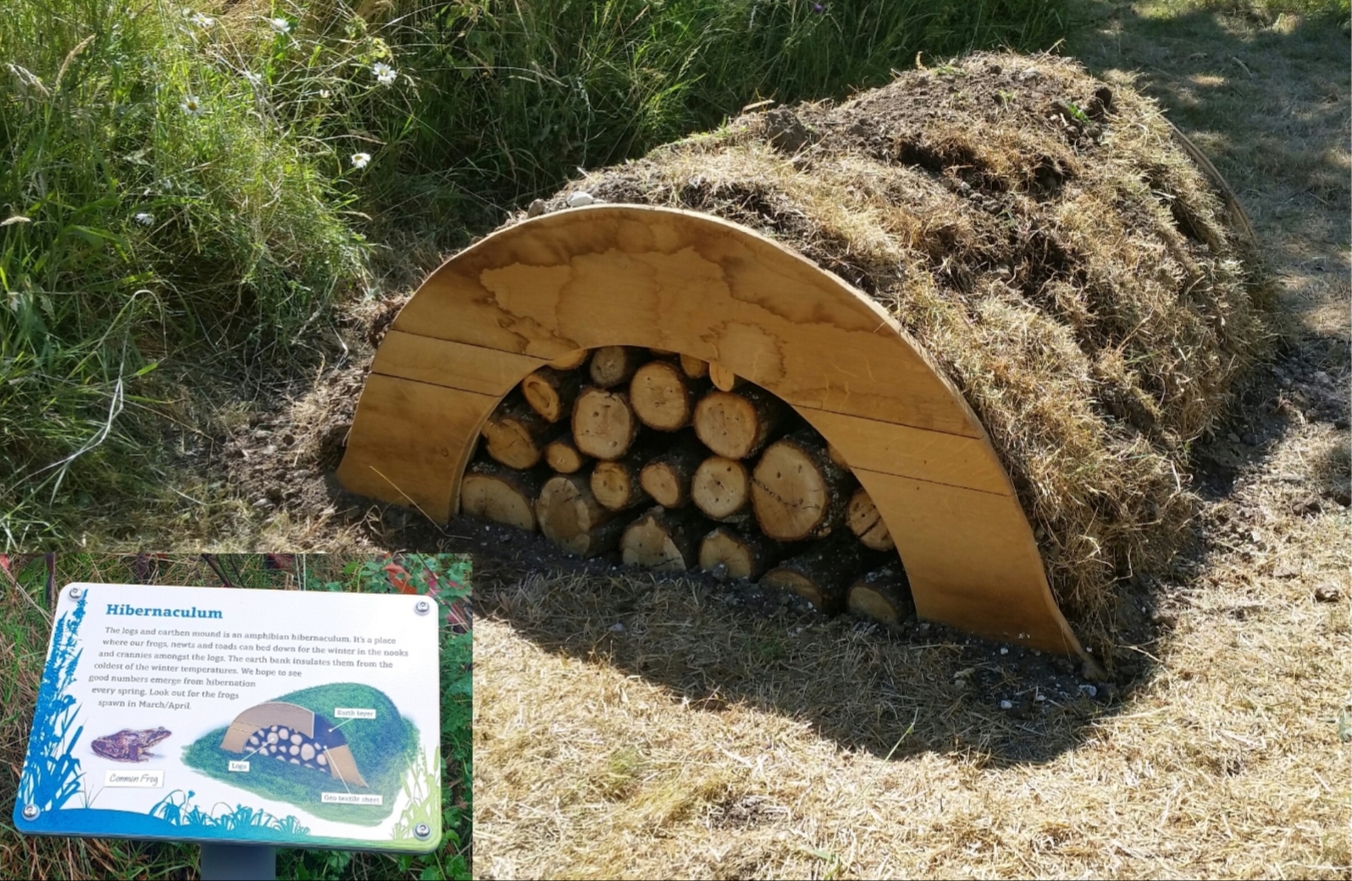
Amphibian hibernaculum for a wildlife friendly garden
We built the big one for Sutton and East Surrey Water, and the smaller one for Toyota’s wildlife friendly gardens. You can scale it up or down according to space you have. Anything you do will be beneficial to amphibians as well as other wildlife.
It’s sensible to mark out your area so you’ve a rough idea how the scale you’re thinking of looks on the ground. Ideally you’ll locate it near a pond or stream, but it’s not essential if you can’t. It’s surprising how far amphibians will travel. In this example we dug a new pond next to our hibernaculum.
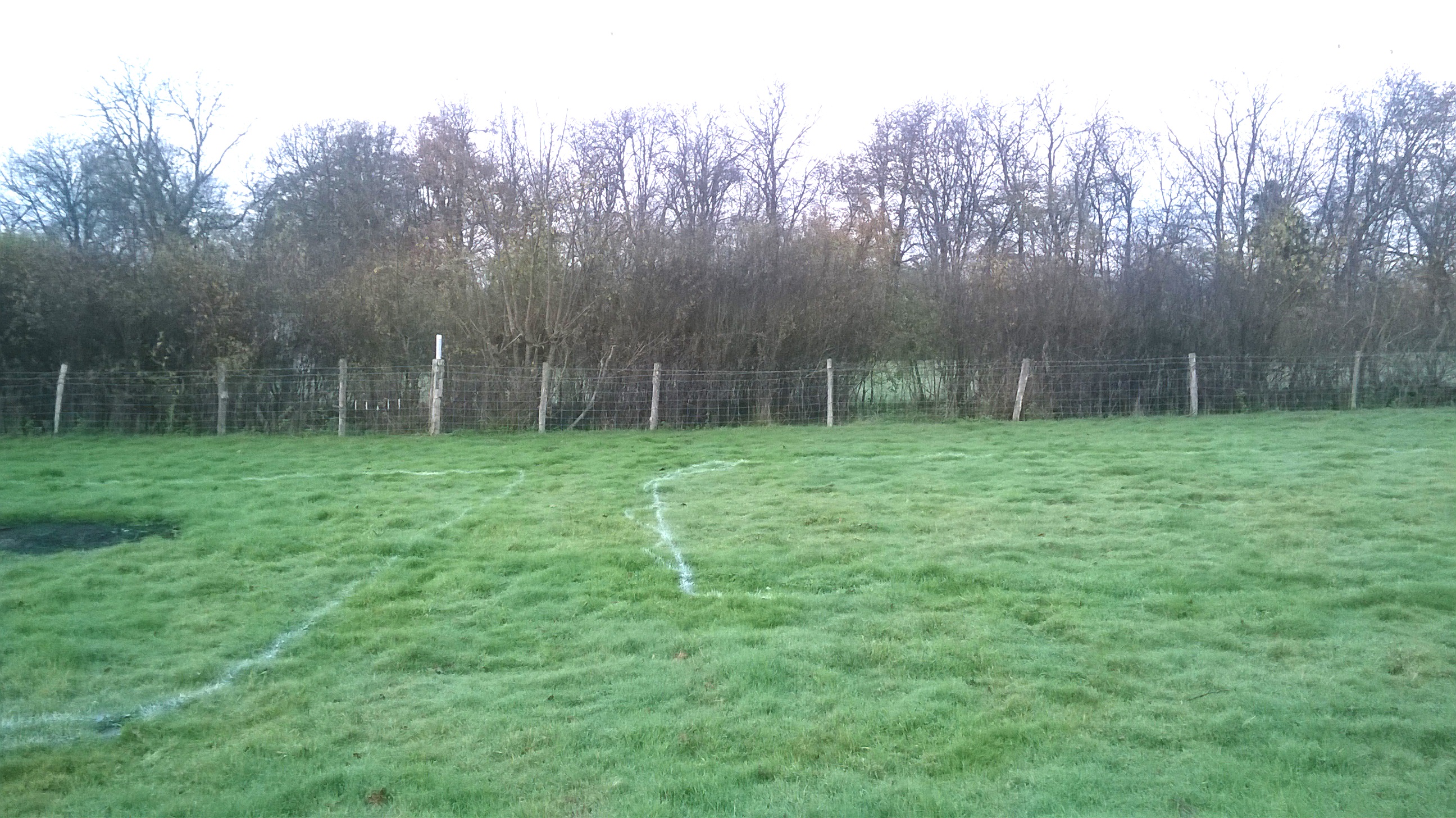
Pile up a bank of wood in your marked area. Don’t be too neat as you want to create lots of crevices and cubby-holes for the newts to get into. Three to four foot lengths of branch wood is good as it tends to be twisty making lots of hidey-holes. Just pile it up to a height that’s proportionate to the area you have available. You don’t want to make it overly steep on the sides or ends. Just make a gently sloping bank.
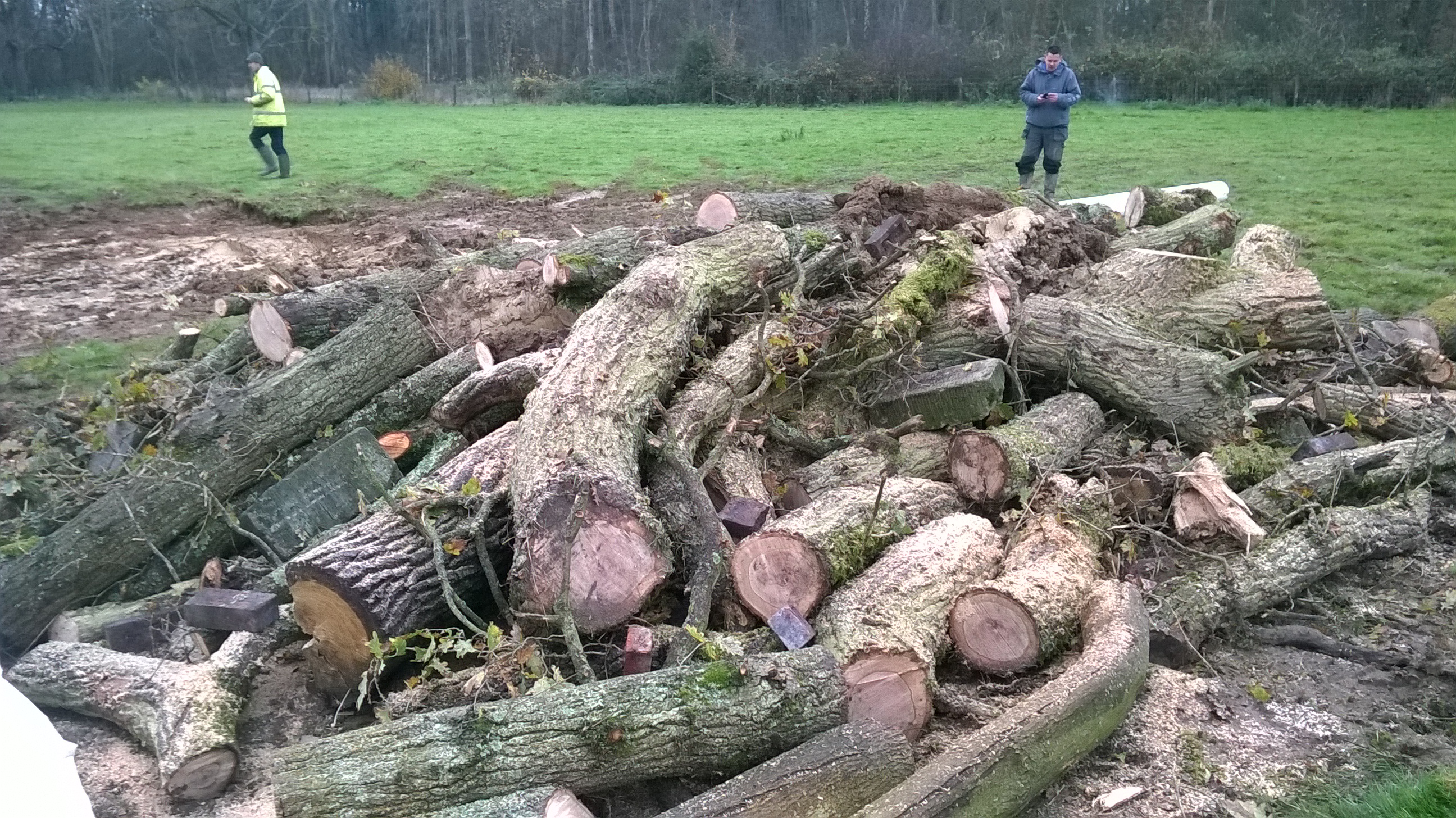
Then lay some sort of membrane over it. Membrane is just a fancy word for some sort of sheet that allows the water and air to pass through it. For this one we bought commercially available sheeting called terram, but to be honest, a cotton bedsheet would do just as well. Basically, you just want to lay a sheet over it to stop all those nooks and crevices from being filled with soil, but still allowing air and water through. You don’t want the inside of your hibernaculum to be bone dry. Don’t bring your sheeting right down to ground level. Cut it so it lies over your logs but leaves a three to four finger gap all around the sides and ends.
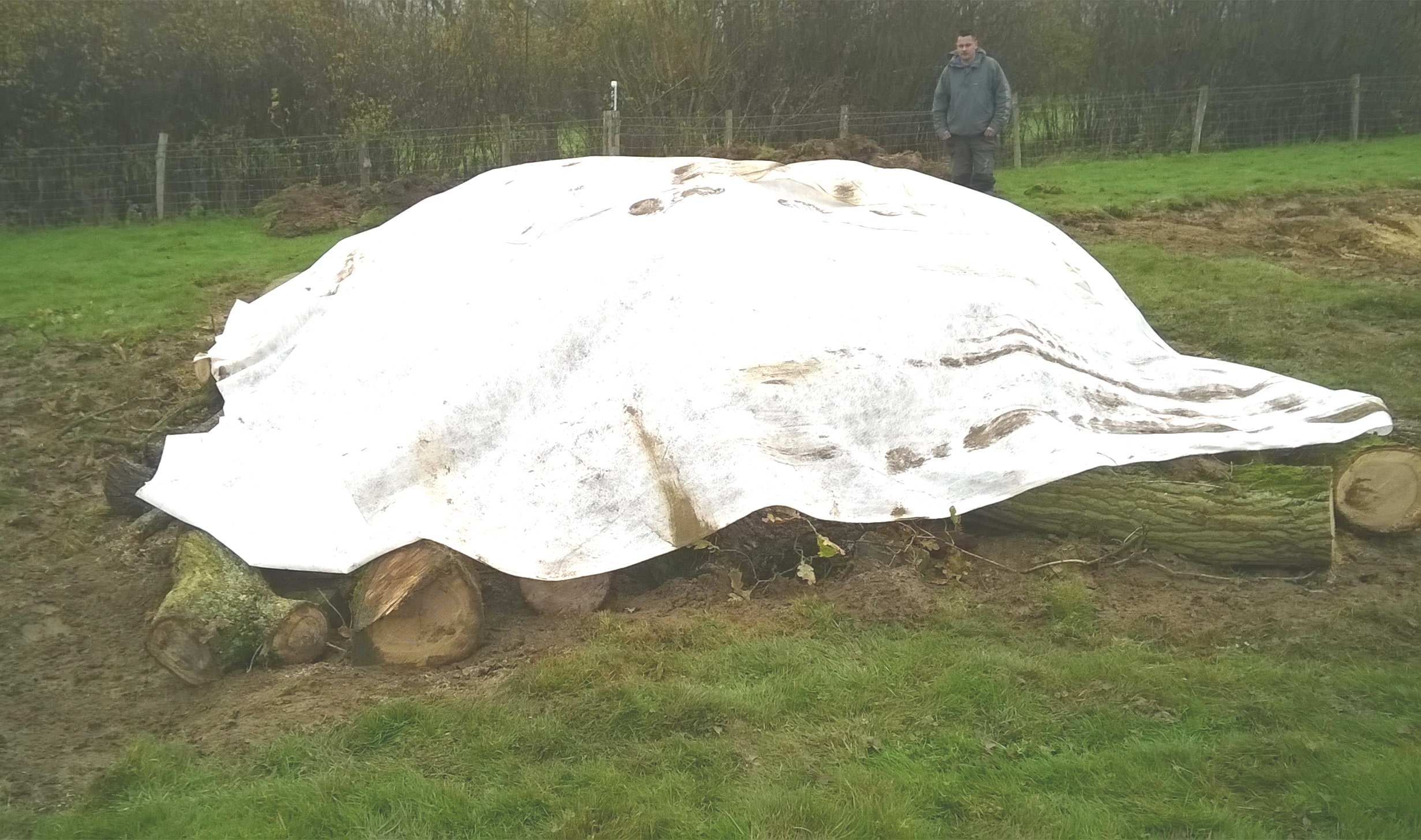
So you’ve got your bank of logs and covered it with your sheeting. Now cover it with turf and soil, again trying to ensure you leave a gap all around the edges so your newts can get in. That sounds a lot easier than it is. The soil tends to roll off your sheet blocking access. Whilst you don’t need to be overly pedantic, you still want to allow access to your newty friends. I found it easier if I laid turf around the edges first. You can even pin the turf in place with bent wire or hazel rods if necessary. If your sides and ends aren’t too steep, you should then be able to pile twenty centimetres or more of soil and turf over your bank of logs. The big one we made had well over two foot of soil over it in places. That’ll help to keep the worst of the frost out. You can grass seed your bank so it looks like a telly-tubby mound if you wish, or leave it to naturally colonise.
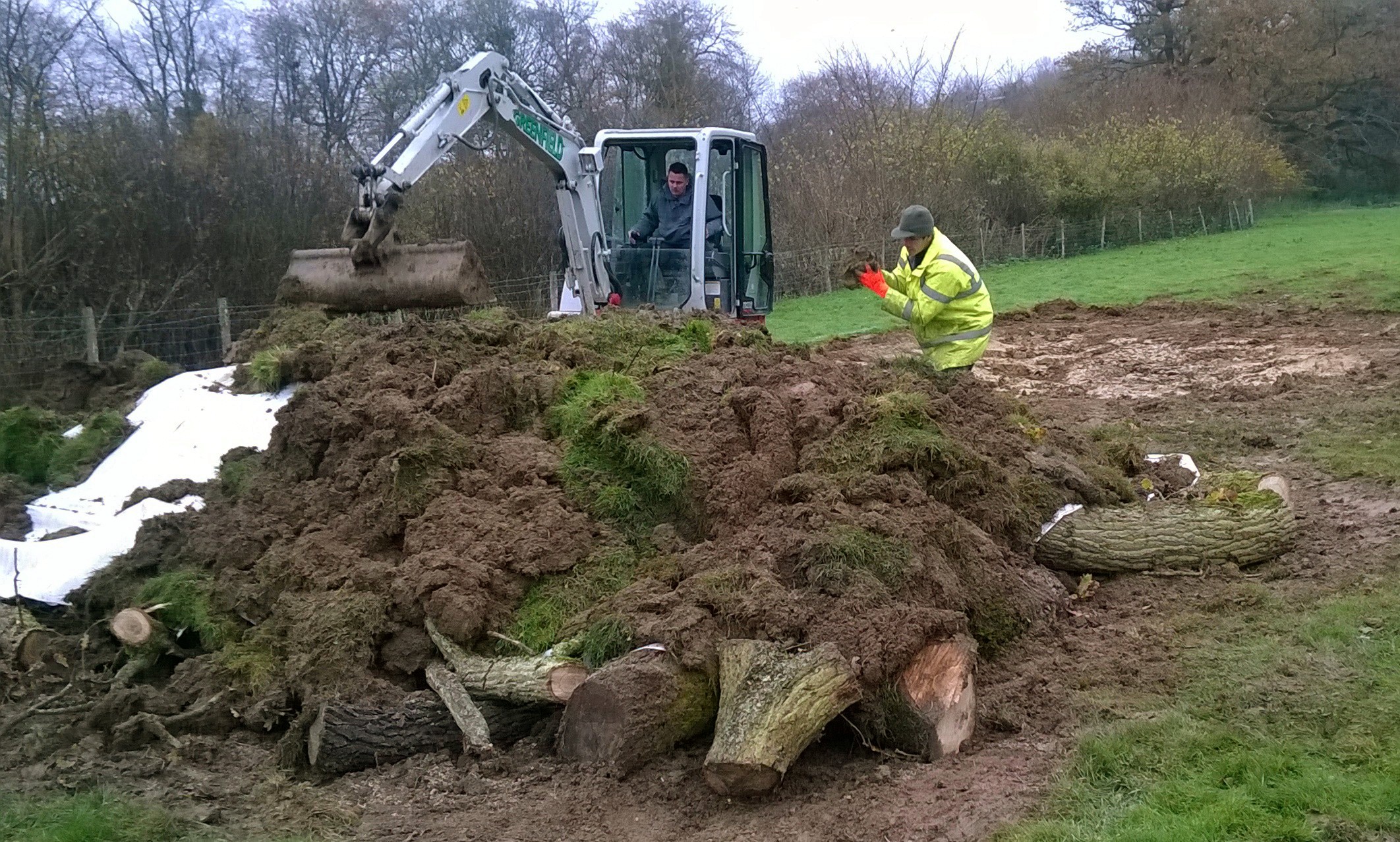
Our soil came from digging out the pond next to it. The pond and hibernaculum is an incredible piece of habitat creation that will benefit a multitude of species over and above the great crested newts we build it for. I regularly see dragonflies, all sorts of water insects, ducks and wading birds etc etc.

Every now and then I’ll have a dig around the edges with a spade to make sure the newts can get in, but to be honest, the gaps they can squeeze into is astonishing. I’m probably doing it more for my own peace of mind than necessity.
You can build one for your garden much smaller. Make a frame from marine plywood and lengths of timber.
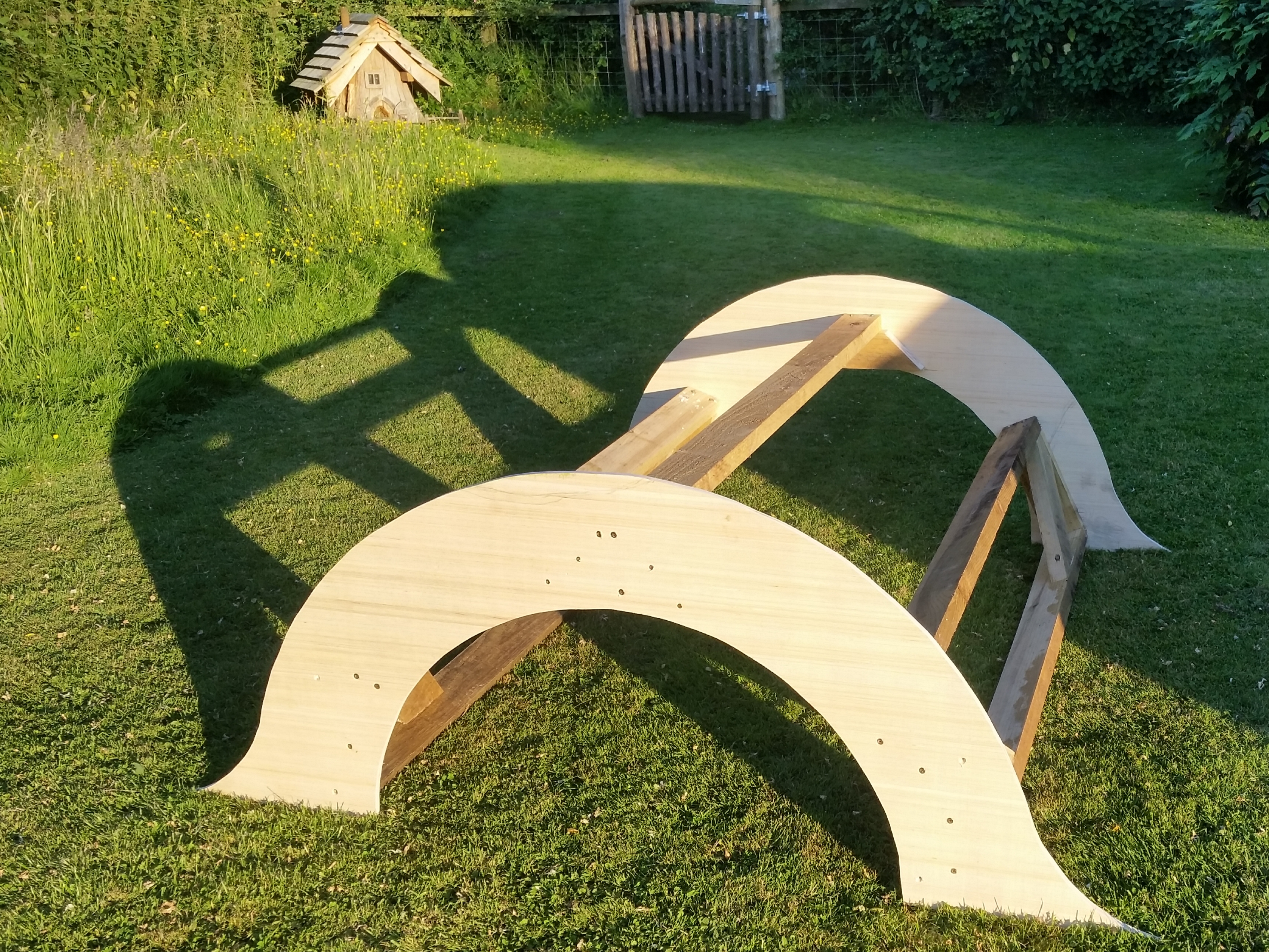
Hibernaculum frame
Just as before, fill the inside with logs, secure a sheet over it to ensure the voids don’t get filled in. Then place soil and turf over the top to insulate it from the worst of the cold. I dressed the front mine with oak as it lasts a long time and looks smart.

Amphibian hibernaculum for a wildlife friendly garden
Your amphibian hibernaculum will become a haven for other wildlife too. You’ll get solitary bees, possibly reptiles, and all sorts of creepy crawlies that make a healthy ecosystem. Give nature a helping hand.
If you like the idea but would rather have a little help, send us an e-mail and we will give you a quote. info@conservationandaccess.co.uk
3 comments on How to Build an Amphibian Hibernaculum
It might just be overkill for my 12ft by 8foot garden.
You can always build a smaller one. Even a little one can be effective! 😉
[…] An overground log and turf reptile hibernaculum. Image credit: Conservation & Access website […]